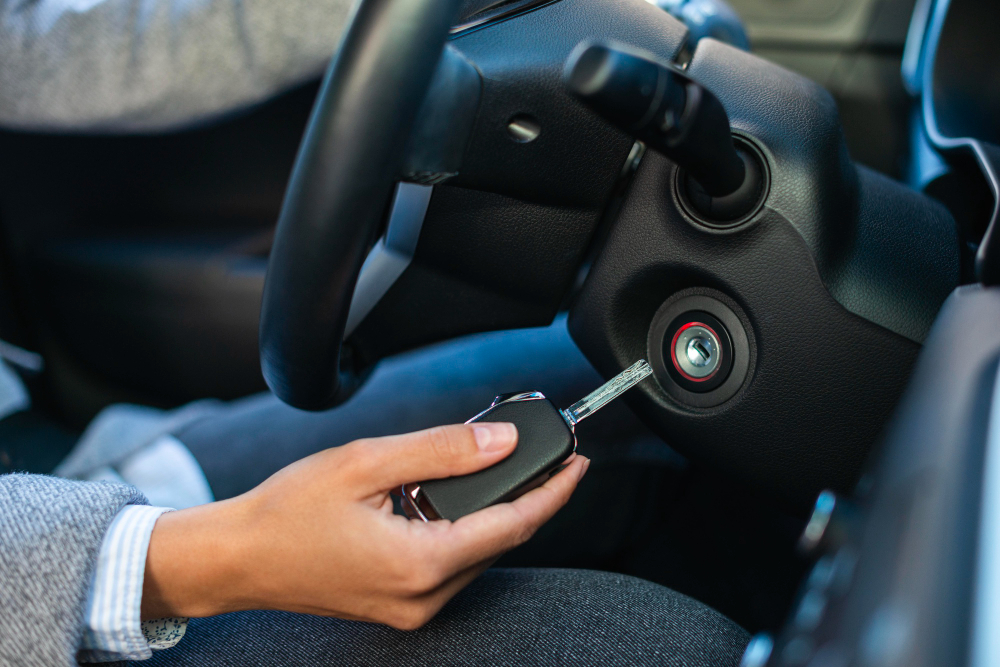Vehicle theft is a growing concern, especially in urban areas, where commuters park on streets or in public lots while at work or running errands. The FBI estimates that a motor vehicle is stolen every 40.9 seconds in the United States, translating to nearly 800,000 thefts per year. Implementing anti-theft devices is crucial to securing your vehicle during daily travel.
From sophisticated attacks on keyless entry systems to quick smash-and-grab thefts, criminals use a variety of techniques to steal cars and valuables inside. Anti-theft devices provide reliable, multifaceted protection that deters thieves and aids recovery if a theft does occur. Common options include immobilizers, steering wheel locks, car alarms and GPS tracking systems.
Common Methods of Vehicle Theft
Criminals use clever and destructive tactics to steal vehicles, ranging from high-tech attacks to brute-force methods. Keyless entry systems have revolutionized convenience, but the wireless signals are vulnerable to attack. Thieves use devices called relay boxes to intercept signals from key fobs inside homes and relay them to a second box held against the car. The vehicle then detects the key signal and unlocks for the thief.
Many thieves still employ traditional hot-wiring to start a car without keys. Slim jims and other tools allow quick access inside to expose ignition wiring that can be manipulated to start the engine. Inexperienced thieves may ransack steering columns causing extensive damage. Professional car theft rings often target high-end vehicles, using sophisticated gadgets to reprogram keys. Vehicle security is an arms race against creative criminals finding new workarounds.
Types of Anti-Theft Devices
Immobilizers
Immobilizers are electronic devices mandated in all vehicles manufactured after 2007. An RFID transponder chip embedded in the key communicates with the vehicle computer. If the key code matches, the system allows engine ignition and fuel delivery. If the wrong key or a hot-wired ignition is detected, engine functions are immobilized until the correct key fob is present.
These systems have proven very effective deterring thieves from stealing newer vehicles. Since 2007 models entered circulation, the FBI reports a 59% decrease in vehicle thefts nationwide. The electronic protection happens automatically when the ignition is off, so drivers do not need to remember to enable it. As long as you have the right key, the vehicle behaves normally. But in the hands of a thief or carjacker, the vehicle remains disabled.
Steering Wheel Locks
Steering wheel locks are a highly visible deterrent against vehicle theft during quick stops. Also called The Club, these removable devices physically lock one vehicle wheel spoke to the steering column. Most feature bright red vinyl coating for high daytime visibility, along with reminders to remove before driving. Thieves will notice the obvious cue and seek easier targets.
If a smash-and-grab attempt occurs, the steering wheel lock also prevents the thief from maneuvering the car. The vehicle may be damaged during unauthorized entry attempts, but the perpetrator cannot drive far without freeing the steering wheel. These classic devices still effectively deter opportunistic thieves.
Car Alarms
A blaring car alarm actively deters thieves from breaking in during an attempted theft, drawing the vehicle owner’s and bystander’s attention. Basic alarms trigger loud noise from a dedicated siren and the car horn when sensors on doors, hood, trunk, or ignition wires detect interference. High-end alarms add flashing lights, a shut-off timer to keep sounding after the violation, and integration with other vehicle security systems.
False alarms can be annoying to vehicle owners and neighbors in tight spaces. But sensitive motion detectors and loud alarms increase the risk of getting caught for thieves. Vehicle cabins also frequently contain expensive personal electronics, bags, identity documents and other valuables —items protected when a thief moves on from the blare of an alarm.
GPS Tracking Systems
GPS vehicle tracking taps into nationwide navigation satellite networks to continuously broadcast a stolen vehicle’s location in real-time. Tracking apps allow law enforcement to remotely monitor movement without a dangerous pursuit. The owner may also be able to immobilize the engine to aid recovery.
GPS tracking increases the chances that a stolen vehicle is found before being hidden away or stripped for parts. Without tracking, recovery rates are as low as 15 percent. Signals leading back to chop shop operations allow police to crack theft rings. GPS also provides digital trip records and timestamps to help link criminals to the crime for prosecution.
How Anti-Theft Devices Enhance Daily Travel Security
Vehicle anti-theft systems provide peace of mind that your asset remains protected while parked on streets, driveways and lots during daily errands. The layered electronic and physical barriers work proactively by deterring thieves from targeting your car. If they do, alarms announce illegal entry attempts and tracking systems enable quick recovery.
Prevention of Unauthorized Access
Immobilizers and steering wheel locks make it difficult to enter and maneuver vehicles without keys in hand. Professional car thieves carry tools to defeat basic locks and access ignition wires, while amateurs often resort to breaking windows to unlock doors. Anti-theft systems keep both thief types from succeeding in stealing your vehicle. With engine functions disabled, smashed windows or a mangled steering columns would be the worst outcome instead of losing your vehicle.
Deterrence of Potential Thieves
Visible deterrents play an important psychological role by communicating increased protection against theft. A steering wheel lock provides a first glance cue to thieves that a vehicle is hardened against attack. Car alarm dome light flashes and warning decals further signal that illegal entry or tampering will trigger loud defensive measures. Signs and LEDs warning about GPS tracking remind thieves that a vehicle is risky to steal, monitored and difficult to hide.
Quick Recovery in Case of Theft
While anti-theft protections make vehicles difficult to steal, professional thieves may still succeed by overcoming certain defenses. In those cases, GPS tracking provides the best chance of recovering the stolen vehicle before it disappears from roadways. Continuous satellite signals showing movements in real-time allow law enforcement to track perpetrators to chop shop locations or conduct safer intended traffic stops. Increased recovery success also reduces overall theft interest, as criminals realize vehicles cannot be kept hidden after the fact.
Peace of Mind for Vehicle Owners
Anti-theft systems provide significant psychological benefits of comfort and confidence in your vehicle’s security. Alarm status lights and steering wheel lock reminders give positive feedback that defenses are enabled every time you leave your vehicle parked. GPS map screens extend that visibility to real-time location tracking if a theft does occur. Having robust technological and physical protections deployed means you can run daily errands without worrying about losing your vehicle or belongings inside.
Best Practices for Using Anti-Theft Devices
While properly installed anti-theft systems are reliable safeguards on their own, following proactive usage and maintenance practices ensure your defenses remain strong over time. Steering wheel locks and car alarm fuses should be checked routinely to address any physical issues or power supply problems. Update onboard GPS software and sync tracking apps on your phone for full functionality.
Combining multiple protection layers attuned to different intrusion methods provides overlapping security. A steering wheel lock deters grab-and-go theft of an idling vehicle. Alarm sensors catch break-ins through windows and panels, while an immobilizer prevents hotwiring of the ignition. GPS tracks location if the car is towed away.
Conclusion
Vehicle theft causes major financial loss and personal disruption for thousands of vehicle owners annually. Anti-theft devices provide reliable protections against thieves employing different tactics to steal cars and valuables inside. Immobilizers, steering wheel locks, car alarms and GPS tracking all enhance security working individually or in tandem.
Implemented properly on a daily basis, anti-theft systems reduce motivation for criminals to target your vehicle by announcing defenses, limiting access and ensuring trackability if a theft occurs. Vehicle owners can feel assured their asset remains protected when left parked on streets, lots and driveways during daily work commutes, errands and recreational activities.

